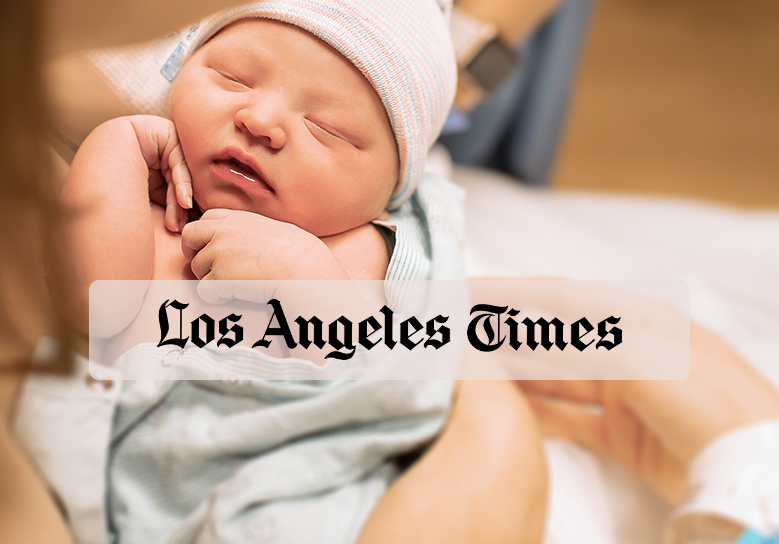
RSC’s Dr. Hinkley interviewed by Contra Costa Times on fertility clinic ignored ASRM guidelines
The Los Angeles doctor who performed in vitro fertilization on a 33-year-old woman who gave birth to octuplets in January is widely described within the industry as an outlier who violated professional norms.
But data from the U.S. Centers for Disease Control and Prevention show that in 2006 80% of U.S. fertility clinics failed to follow the American Society for Reproductive Medicine’s (ASRM’s) 1999 embryo implantation guidelines. ASRM advises on treatment protocols for fertility clinics, recommending implanting in women 35 or younger no more than two embryos.
”Assisted reproduction is a multibillion-dollar business,” said Marcy Darnovsky, of the Center for Genetics and Society in Oakland. ”Like other commercial enterprises, it needs rules.”
Sean Tipton, a spokesman for the society, countered that many of the clinics may have followed the guidelines, since exceptions are permitted.
Regarding whether it’s likely that four out of five cases could merit exceeding the guidelines due to unusual challenges in conceiving, he said the society couldn’t second-guess doctors’ decisions.
”We don’t like to assume,” Tipton said.
The society’s steadily revised guidelines seek to reduce the number of twins, triplets and higher-order births by women receiving in vitro fertilization. About one-third of all in vitro births result in twins, and 2 percent result in triplets, according to the CDC.
In comparison, only one in 80 natural conception pregnancies, or 1.3 percent, results in twins, and one in 6,400 yield triplets, a tiny fraction of 1 percent.
This newest revelation over outcomes in fertility clinics is only adding to the call for tighter controls over the industry, which now follows strictly voluntary guidelines for treatment decisions. And it’s the latest in a long string of ethically murky scenarios arising over the years from a profession that tinkers with human reproduction. This month, twins were born to a 60-year-old Canadian woman who underwent in vitro fertilization. Also recently, a Los Angeles clinic claimed to soon offer services for selecting traits like hair, eye and skin color in babies.
”If we leave it up to the marketplace, we’ll get more abuses and a race to the bottom,” Darnovsky said.
There’s an industry movement to reduce the number of multiple births due to infertility treatments, to protect the health of infants and mothers. About two-thirds of twins conceived through in vitro fertilization are born premature, as are 95 percent of triplets.
These babies are significantly more likely to develop cerebral palsy, neurological complications and learning disorders, as well as breathing and digestive problems, among other long-term health issues. A multiple-birth pregnancy also triples the mother’s risk of death, and it increases the odds of her developing hypertension and postpartum hemorrhage.
But Tipton said it’s often a hard sell with parents to take a more conservative approach that will yield a single birth.
”The desired goal is a singleton pregnancy,” he said. ”But it can be very difficult to convince patients that twins are less than ideal.”
That’s the experience of Mary Hinckley, a fertility doctor with Reproductive Science Center of the Bay Area, which has offices in Orinda, San Ramon and San Jose.
”It’s rare to find people who don’t want twins,” she said. ”They want to have a complete family sooner, they don’t want to have to deal with two pregnancies, they think twins are cute. They think there’s no risk in it.” Like many fertility doctors, Hinckley said more regulations aren’t needed, and that fertility clinics are one of the few practices required to report outcome data.
But the nature of the business calls for tighter oversight, said Arthur Caplan, director of the Center for Bioethics at the University of Pennsylvania and a regular MSNBC commentator.
”There’s a huge difference,” he said. ”The other groups aren’t making new people.”
Caplan has long favored an oversight system for fertility clinics modeled on those governing blood and organdonation services. Caplan helped establish the latter, the United Network for Organ Sharing, in the 1980s. It consists of an advisory board, and works on contract with a federal health agency. The United States is also one of only a handful of developed countries without laws regulating specific treatment protocols in fertility clinics, such as the number of embryo transfers or screening embryos for sex selection.
And the high rate of multiple births isn’t the most vexing concern for Caplan. What alarms him is the prospect of fertility clinics offering services to endow offspring with extra intelligence, athletic ability, or physical attributes. A procedure called preimplantation genetic diagnosis, or PGD, already is used to screen for sex selection at many clinics in the United States, as well as for genetic abnormalities.
”PGD is the single most controversial subject to ever face this field because you get right back to the eugenics issue,” he said, referring to a movement that arose in the early 20th century that called for the promotion of certain traits among humans, and the reduction of others.
Hinckley, with the Orinda clinic, said she doesn’t regard that development with alarm. ”Most of us in the field view it as an inevitable thing that will come along. And we’ll all have to decide how we’re gong to deal with it.”




